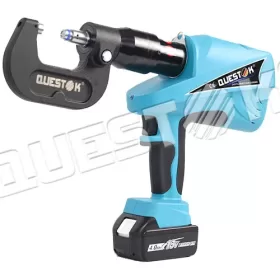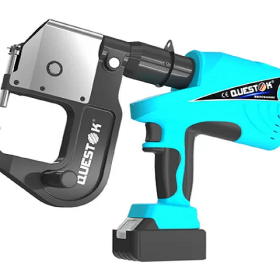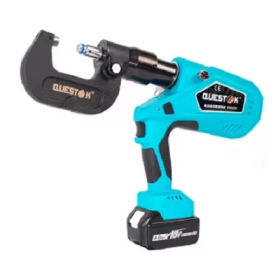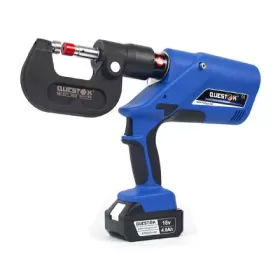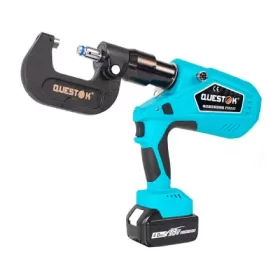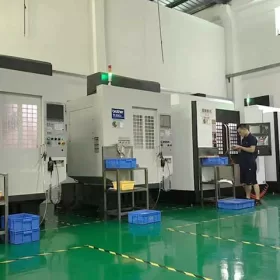Challenges and Solutions in Universal Self-Piercing Riveting Applications
Self-piercing riveting (SPR) is a joining technique where a blind rivet is pressed through multiple sheets of material, forming a permanent joint without the need for predrilling or punching holes. Universal self-piercing riveting (USPR) is a variation of SPR that utilizes a single rivet design capable of joining a wide range of material thicknesses and combinations. However, USPR applications face specific challenges requiring innovative solutions to ensure optimal joint performance.
Material Dissimilar Thicknesses
Joining materials with dissimilar thicknesses can lead to uneven squeezing force distribution, resulting in weak joints. To address this, USPR rivets employ stepped or variable diameter shanks that adapt to varying material thicknesses and create balanced squeezing forces. These shanks ensure sufficient penetration and clinch force throughout the joint, providing reliable joint strength.
Material Dissimilarities
USPR applications involve joining materials with different properties, such as strength, hardness, and surface finishes. Conventional USPR rivets may not always be suitable for these diverse material combinations. To overcome this, advanced rivet designs have been developed to accommodate the different material characteristics. These rivets feature specialized materials and geometries, such as dual-diameter shanks or self-lubricating coatings, to optimize joint performance and prevent damage to the materials being joined.
Joint Accessibility
In certain applications, access to the joint area may be limited, making traditional riveting methods challenging or impossible. USPR offers a solution by providing ergonomic riveters with extended reach or remote riveting capabilities. These specialized riveters allow operators to access difficult-to-reach areas, ensuring proper rivet installation and joint integrity. Additionally, the reduced size and weight of USPR rivets make them ideal for applications where space is constrained.
Automation and Process Control
Automation in USPR applications enhances efficiency, consistency, and quality. Automated riveting systems employ precision control over all process parameters, including rivet force, setting time, and material movement. This reduces operator dependence and improves joint repeatability, ensuring consistent and reliable joint performance. Furthermore, advanced monitoring systems provide real-time feedback on rivet installation, enabling early detection of any potential issues and minimizing costly downtime.
Environmental Considerations
Environmental regulations and sustainability concerns have driven the development of eco-friendly USPR solutions. Rivets made from recyclable or biodegradable materials reduce environmental impact without compromising joint performance. Additionally, the reduced energy consumption associated with USPR, compared to traditional joining methods, contribute to energy efficiency and sustainable manufacturing practices.
Conclusion
Universal self-piercing riveting (USPR) offers a versatile and innovative solution for joining a wide range of materials and thicknesses. By addressing the specific challenges associated with USPR applications, manufacturers can achieve optimal joint performance, enhance productivity, and meet the demands of modern manufacturing environments. The challenges and solutions discussed in this article provide a comprehensive overview of the current state of USPR technology, highlighting its adaptability and importance in diverse industrial sectors.
- Company News
- Industry News
- Tag
- Tags
-
The Advantages of Questok Rivet Guns: Precision, Efficiency, and Durability
In industrial fastening applications, the choice of tools directly impacts productivity, safety, and long-term cost-effectiveness. Questok rivet guns have emerged as a standout solution for professionals across aerospace, automotive, and construction sectors. Combining advanced engineering with user-centric design, these tools deliver unmatched performance. Below are the key advantages that make Questok rivet guns a preferred choice:
-
Rivet Gun FAQ
Rivet Gun FAQ-SPR
-
Fast Assembly and Repair With Cordless Solid Rivet Gun
Questok cordless solid rivet gun stands out as a pivotal innovation, merging portability with power to facilitate efficient and effective fastening in a myriad of applications.
-
Redifine The Role of Self-piercing Riveting Gun Machine
Self-piercing riveting adopts high-speed mechanical fastening skill that joins thin sheet materials, typically steel and aluminum alloys.
-
The Latest Innovations in Clinching Tool Design
Explore the latest innovations in clinching tool design, redefining precision, efficiency, and versatility in material joining.
-
The Application and Maintenance of Self-Piercing Rivet Guns
Delve into the applications of self-piercing rivet guns in the automotive and aerospace industries and reveal the essential maintenance practices that ensure their accuracy and efficiency.
-
Rivetless Riveting Gun for Ventilation Duct Projects
The ventilation duct rivetless gun is a tool for riveting ventilation ducts without rivets.
-
Guide to Using Self-Piercing SPR Riveting Gun
In the automotive industry, self-piercing SPR (Self-Piercing Rivet) riveting guns are commonly used for joining metal components in vehicle bodies, including BMW vehicles.
-
Rivet Gun FAQ
Rivet Gun FAQ-SPR
-
Versatile Fastening- Applications of the Handheld Rivet Gun Across Industries
In the realm of fastening, the handheld rivet gun stands as a testament to ingenuity and versatility. Its ability to effortlessly join materials with sheer strength and permanence has revolutionized manufacturing and construction processes, leaving an enduring mark on diverse industries. Aerospace: Where precision and reliability are paramount, the rivet gun shines. In aircraft assembly, […]
-
Time-Saving Tools- Speeding Up Projects with Electric Blind Rivet Guns
In the whirlwind of project deadlines, every minute counts. But what if there was a tool that could dramatically reduce assembly time, giving you an edge in the race against the clock? Enter the electric blind rivet gun: your secret weapon for lightning-fast and effortless riveting. Electric blind rivet guns are the ultimate time-savers for […]
-
Streamlining Fastening- How an Electric Blind Rivet Gun Enhances Efficiency
Introduction In the realm of manufacturing and assembly, fastening plays a crucial role in securing components and ensuring structural integrity. Traditional manual rivet guns, while reliable, are often time-consuming and labor-intensive. The advent of electric blind rivet guns has revolutionized the fastening process, significantly enhancing efficiency and productivity. This article delves into the benefits of […]
-
The Role of Automation in Electric Rivetless Clinching
Electric rivetless clinching (ERC) is a lightweight joining process that eliminates the need for rivets or other fasteners. This can lead to significant cost savings and increased production efficiency. Automation plays a critical role in ERC, enabling high-speed and high-volume production. Automated Feed Systems Automated feed systems are used to accurately position the two workpieces […]
-
Why Choose a Universal Self-Piercing Riveting Gun for Your Projects?
In the realm of construction and fabrication, riveting guns stand as indispensable tools for creating secure and robust connections. Among the various types available, universal self-piercing riveting (SPR) guns have emerged as a game-changer due to their versatility and efficiency. This article will delve into the compelling reasons why choosing a universal self-piercing riveting gun […]
-
Why Choose Stainless Steel Hollow Rivets for Your Projects?
In the world of industrial manufacturing, choosing the right fasteners for your projects is crucial for ensuring longevity and reliability. Among the many options available, stainless steel hollow rivets stand out as a superior choice for a wide range of applications. This article delves into the compelling reasons why stainless steel hollow rivets are the […]
-
Top Trends in Electric Rivetless Clinching Guns
In the realm of fastening technology, electric rivetless clinching guns have emerged as a revolutionary solution for a wide range of industrial applications. These advanced tools offer several преимущества and capabilities, revolutionizing the way businesses approach their fastening needs. Adoption of Brushless Motors Brushless motors have gained significant traction in electric rivetless clinching guns due […]

